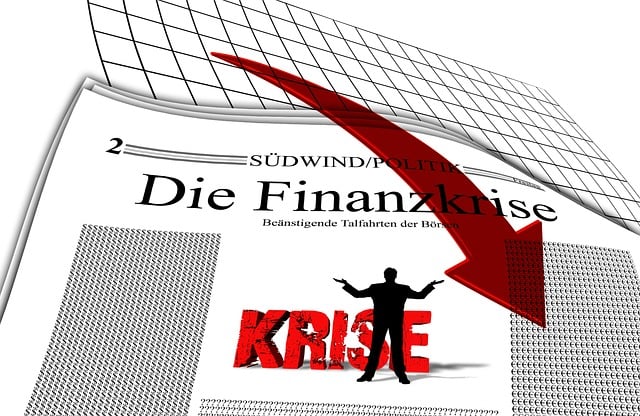Debt restructuring and debt review are two distinct strategies for managing financial obligations. Debt restructuring directly renegotiates loan terms, such as lower interest rates and extended repayment periods, to simplify debt burdens, particularly suitable for multiple or high-interest debts. In contrast, debt review critically analyzes existing situations, identifies areas for improvement, and provides recommendations for better terms or alternative strategies like consolidation, empowering individuals to gain tailored financial control. The choice depends on individual needs: restructuring for significant, unsustainable debts, and review for manageable debts requiring discipline and budget adjustments. Both offer short-term relief and long-term stability through strategic financial management.
Debt Restructuring vs. Debt Review: Understanding the Nuances for Financial Freedom. While both aim to alleviate financial strain, these strategies differ significantly. Debt Restructuring involves renegotiating terms with creditors, often reducing interest rates and extending repayment periods. Debt Review, on the other hand, focuses on analyzing your entire debt portfolio, offering guidance, and creating a tailored plan. This article explores their unique features, similarities, and when to opt for each, guiding you towards informed financial decisions.
- What is Debt Restructuring?
- Key Features of Debt Review Programs
- Similarities Between Debt Restructuring and Debt Review
- Differences in Approach and Impact
- Choosing the Right Option for Your Financial Needs
- When to Consider a Combination of Both Strategies
What is Debt Restructuring?

Debt restructuring is a strategic process that involves reorganizing an individual’s or entity’s existing debt obligations to achieve better financial terms and conditions. It aims to simplify complex debt burdens, often by modifying loan agreements, extending repayment periods, or adjusting interest rates. This approach is particularly useful when facing overwhelming debt, multiple lenders, or varying interest rates. By restructuring, borrowers can gain relief from immediate financial pressure and potentially save money in the long term.
When comparing Debt Restructuring Vs Debt Review, it’s key to understand that while both focus on improving debt management, they differ in scope and outcomes. Debt review typically involves a thorough analysis of the borrower’s financial situation to assess potential options for better managing existing debt. It may include negotiating with creditors or exploring alternative repayment strategies. In contrast, Debt Restructuring takes these assessments a step further by implementing concrete changes to the debt structure, offering a more comprehensive solution for those seeking significant debt reduction and improved cash flow management.
Key Features of Debt Review Programs

Debt review programs offer a structured approach to managing debt, focusing on assessing and evaluating an individual’s financial situation. These programs typically involve meeting with a trained financial advisor who analyzes income, expenses, and existing debts to create a comprehensive plan. A key feature is that they provide a clear roadmap for repayment, often suggesting strategies like budget adjustments, debt consolidation, or negotiation with creditors. This process helps individuals understand their options, set realistic goals, and make informed decisions about their financial future.
Unlike Debt Restructuring which involves changing the terms of the loan, Debt Review focuses on creating a manageable repayment plan within the existing loan structure. It offers a more flexible and less formal way to gain control over debt, making it an attractive option for those seeking guidance without significant changes to their loans. This process empowers individuals to take proactive steps towards financial stability while considering both short-term relief and long-term sustainability.
Similarities Between Debt Restructuring and Debt Review

Debt restructuring and debt review are both strategies aimed at helping individuals or businesses manage their financial obligations more effectively. A key similarity between them is that they both seek to alleviate the burden of debt, ultimately improving cash flow and financial stability. They involve reassessing existing debt terms and conditions to create a more manageable repayment plan.
Both processes can be initiated by the debtor or recommended by creditors as a way to mitigate the risks associated with default. While debt restructuring typically involves negotiating new terms directly with lenders, debt review focuses on analyzing the entire debt portfolio to identify areas for improvement, including potential reductions in interest rates, fees, or principal amounts. Both approaches require thorough financial analysis and often involve credit counseling or consultation with financial experts.
Differences in Approach and Impact

Debt restructuring and debt review are two distinct strategies with unique approaches to managing financial obligations. Debt restructuring involves a comprehensive overhaul of an individual’s or business’s debt portfolio. It entails renegotiating terms, often including lower interest rates, extended repayment periods, or even debt forgiveness. This approach aims to make the debt more manageable by simplifying the repayment structure and reducing the overall financial burden. Restructuring is particularly beneficial when dealing with multiple debts from various sources, allowing for a more streamlined and potentially faster path to debt elimination.
In contrast, debt review focuses on a critical analysis of an individual’s or entity’s current debt situation. It involves evaluating each debt’s characteristics, including interest rates, fees, and repayment terms, to identify areas of improvement. Debt review experts provide recommendations for negotiating better terms with creditors or suggesting alternative strategies like debt consolidation. This method is ideal for those seeking to gain control over their financial situations without necessarily undergoing a major restructuring. It empowers individuals to make informed decisions, prioritize debts, and develop long-term financial management plans.
Choosing the Right Option for Your Financial Needs

When faced with financial challenges, understanding the nuances between Debt Restructuring and Debt Review is crucial for making informed decisions. Both options aim to alleviate debt burdens but differ in their approaches. Debt restructuring involves renegotiating terms with creditors, often leading to lower interest rates, extended repayment periods, or a combination of both. This strategy is ideal when dealing with substantial debt that cannot be managed under current terms. On the other hand, debt review focuses on evaluating your financial situation and creating a strategic plan to manage and pay off debts effectively. It’s suitable for those seeking a structured yet flexible path to debt elimination.
Choosing between these options depends on your unique financial needs and goals. If you’re overwhelmed by high-interest rates or struggling with multiple debts, restructuring might be the way to go. Conversely, if you require a more tailored plan to gain control over your finances and want to retain as much autonomy as possible, a debt review could be the preferred choice.
When to Consider a Combination of Both Strategies

When faced with overwhelming debt, individuals often wonder which strategy to adopt: restructuring or reviewing their debt. The former involves renegotiating the terms of the debt, such as lowering interest rates or extending repayment periods. It’s ideal when debt levels are high and traditional repayment methods are unsustainable. On the other hand, a debt review focuses on evaluating one’s financial situation, identifying areas for improvement, and creating a realistic budget to manage existing debts more effectively. This approach is suitable when debt is manageable but requires discipline and strategic planning.
A combination of both strategies can be highly beneficial in certain situations. For instance, an individual might first conduct a thorough debt review to understand their financial constraints and create a feasible budget. Simultaneously, they could explore options for restructuring specific high-interest debts to ease the immediate financial burden. This dual approach allows for both short-term relief through budget adjustments and long-term stability by renegotiating terms with creditors.
Debt restructuring and debt review are both powerful tools in managing financial obligations, each with unique approaches. While debt restructuring involves renegotiating terms for existing debts, debt review focuses on analyzing and understanding your financial situation to create a tailored plan. Understanding these differences is crucial when choosing the right strategy for your needs. Both options can lead to significant debt reduction and improved financial health, but they achieve this in distinct ways. By evaluating your financial goals and exploring these concepts, you can make an informed decision, ultimately navigating your path to a more secure financial future.







